Going to a beach that allows you to drive on it can be quite a fun experience. Imagine being able to drive right to where you want to set up instead of making your family lug all of your beach supplies from the parking area. Just be sure you know the proper techniques for driving on sand and what to do if you get stuck.
If you want to make it out on the beach safely and with the least amount of problems, be sure to pack lightly deflate your tires, and take your time. Follow these tips so you get home safely.
There are only so many beaches in the country that you can legally drive on. Double-check any local laws and regulations to be sure that you are on one of them. Also, verify what time of day and time of year you're allowed to drive on the beach. Some areas also require you to get a special permit before you start your drive.
Although you can take your car right onto hard-packed sand, having a 4WD capable vehicle will only make things easier. 4WD makes it easier for you to drive on sections of the beach that aren't wet or packed down since you have power to all four wheels instead of just two.
The less weight you have in your vehicle, the lower your odds of sinking in the sand. Leave everything at home that isn't a beach necessity — just don't forget to pack the sunscreen!
You may think you should always have your tires inflated to the proper levels, but when you involve sand, it's a different story. Tire pressure of 20 PSI is recommended for most beach conditions, but if the sand is really soft, lower it accordingly. Make sure you reinflate your tires once you get back on the road.
The scariest thing about driving on the beach is getting caught in high tide. Before you plan out your drive, make sure you know when the high and low tides are for the day. It is best to drive within two hours of low tide since there is a lot more beach to drive on.
Before you plan out your drive, make sure you know when the high and low tides are for the day. It is best to drive within two hours of low tide since there is a lot more beach to drive on.
The best place you can possibly drive on the beach is between the high tide mark and the water. The compacted sand is the hardest in this area, so you minimize your chances of sinking and getting stuck. Try to follow other tire tracks as well, so you can see where everyone safely drove.
Avoid driving fast on the beach, or you can get stuck. The general rule is to stay below 25 MPH. Another good tip is to avoid braking hard. Instead, coast to a stop if possible. If you brake hard, you can end up burying your vehicle in a rut.
Something most people don't think of is to stop at a carwash after a beach drive to spray off all of the salt and sand. Salt is very corrosive and will eventually lead to the rusting of your car. Be sure to spray the underbody and wheel wells especially well.
Salt is very corrosive and will eventually lead to the rusting of your car. Be sure to spray the underbody and wheel wells especially well.
Anytime you drive on a beach, you run the risk of getting stuck if you aren't careful. You can keep yourself prepared by having a beach driving kit that includes the following:
Shovel
Spare tire
Traction mats
Tow straps
Water jugs
Rope
Extra gas
Flashlight
First aid kit
These tools will help you get out of most sticky situations, but you need to know how to use the tools as well. If you end up stuck in the sand, follow these steps:
Lay off the gas — Excess spinning can just dig a deeper hole for you to get out of.
Use your traction mats — Place the mats on the sand behind your tires and back up onto them.
Break out the shovel — If the mats don't help, you're going to have to dig a path in front of your tires. Lay down your traction mats and try to drive forwards.
Wet down the sand — Use the nearby water to wet the sand and pack it down. Hopefully, this gives you enough traction.
Ask for a tow — If all else fails, find someone nearby who is willing to give you a pull with your tow straps.
Driving on the beach is a blast and can make hauling all of your essentials much easier. Just be smart and avoid any situations that may lead to you getting stuck. Another way to learn how to drive in different conditions is by taking a driver's ed course at Aceable.com. You'll learn how to be a safe driver through our online lessons and interactive methods.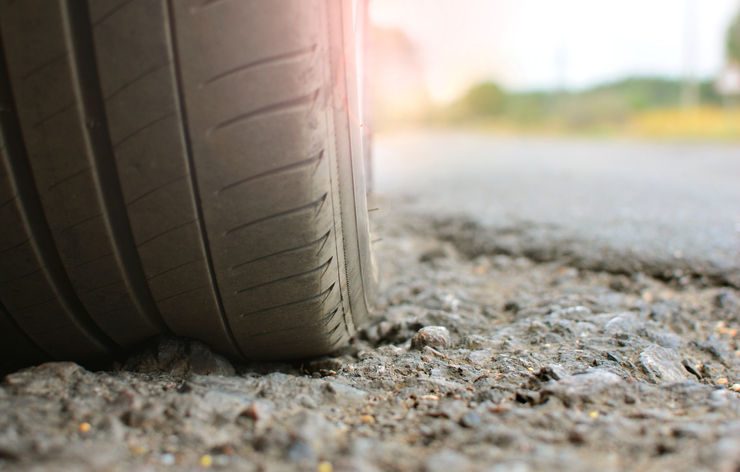
Updated 8/11/22
If your 4WD gets bogged on sand, there’s a good chance you are running your tyres with too much air in them. Every vehicle and beach is different, but often people are far too conservative when it comes to deflating their tyres enough for beach driving.
There’s nothing more frustrating than getting stuck behind a bogged 4WD on the beach, whilst they struggle to move half a meter because of the wrong tyre pressures. There is a correct tyre pressure for beach driving, and it depends on your vehicle, tyre size and how soft the sand is!
One very bogged Jeep
When you let air out of your tyres, the surface area of rubber contacting the ground increases. It gets slightly wider, and a lot longer. From full tyre pressure down to around 15PSI your surface area nearly doubles.
This means that instead of the weight of your 4WD being distributed over each tyres small footprint (and forcing the tyres to sink), the load is spread over pretty much double the area, and allows the tyres to float over the top of the sand.
The best tyre pressure for sand is the one that allows you to drive over it easily and safely.
Float, not bulldoze!
Asides from dramatically increasing the chances of your vehicle getting bogged on the beach, you work your engine considerably harder.
A 4WD that has to bulldoze its way through soft sand as a pose to allowing the tyres to float over the sand will often run much hotter, and can easily cause engine damage if you aren’t careful. This also results in using a lot more fuel than if you adjusted your pressures properly.
Even at 15 PSI you can find soft spots!
You will find that you dig huge ruts with tyre pressures that are too hard as well, which will make it very difficult for anyone else to follow in your tracks.
Asides from the giant ruts, tyres that are not deflated enough spin and create bumps on the track. You might not think it makes much of a difference, but its a terrible feeling trying to follow a track whilst you are getting thrown up and down!
After a big Easter at Yeagarup the tracks were so badly chopped up that it was almost impossible to get enough momentum to drive up the exit dune.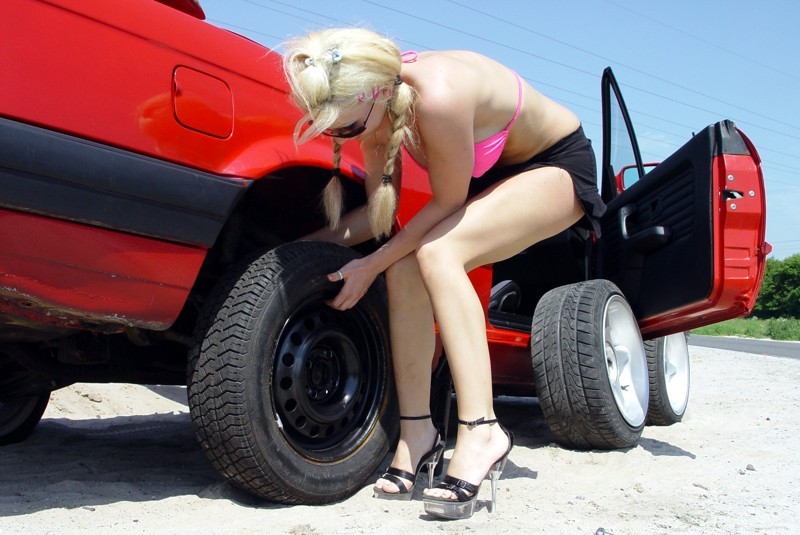
The bottom line though, if you don’t have the PSI for beach driving you risk getting stuck. If this happens to be as the tide is coming up, you are putting your pride and joy at risk.
Bogged with an incoming tide
It takes a bit of practise to get the tyre pressure correct. For some beaches, you barely have to let the air out at all. For many beaches in WA though, you won’t make it more than 10 metres from the entrance without proper tyre deflation.
Adjust your pressures according to the conditions
When your 4WD tyres are deflated correctly for beach driving, you should be able to roll without any acceleration for at least a couple of meters. If you take your foot off the accelerator and the vehicle almost immediately bogs down and stops, you know the tyres are digging in and not floating, like they should be.
Your vehicle shouldn’t be struggling to drive on the beach either; even the softest beaches can be driven by most 4WD’s without any issues. If your car is struggling, go down a bit more and you will be amazed.
If your car is struggling, go down a bit more and you will be amazed.
If there are signs asking you to reduce your tyre pressure to a certain amount, please follow them. They are there for a reason, and you will chop tracks up without the right pressures.
Kicking back at the Gardiner River
I tell most people the recommended tyre pressure for beach driving is 16 PSI, and lower as required. Even heavy Land Cruiser and Patrols (like my 80 Series is when it’s loaded up) can be safely driven along the beach at 16 PSI.
For light weight vehicles, like Jimny’s and Sierra’s, you can start off at around 12 PSI. I would not go above 35 – 40km / hour at these pressures!
Be aware that if you corner quickly, your chances of rolling a tyre off the bead increase phenomenally. You should never brake hard, or turn quickly on soft sand anyway, but even more so when you have low tyre pressures.
The heavier your vehicle is, the more air you should keep in your 4WD. Likewise, if you go up in tyre sizes, you gain flotation and may not need to deflate them as much. The right PSI for beach driving takes a bit of trial and error, and vastly depends on how soft the beach is.
Likewise, if you go up in tyre sizes, you gain flotation and may not need to deflate them as much. The right PSI for beach driving takes a bit of trial and error, and vastly depends on how soft the beach is.
Another thing to remember is the temperature of the air in your tyres. This varies considerably, and your tyre pressures will change a lot depending on whether you read the gauge after driving for a while, or when the tyres are cold. You can read more about this at Do you check your tyre pressures hot or cold?
You should float on top
If your vehicle is struggling at 20PSI on the beach, let some more out. If you go down to 15PSI, that’s 25% less air in the tyres. 5 PSI might seem like very little, but it makes a world of difference.
If you really get in trouble, don’t be afraid to let your tyres down to 8, or even 6 PSI. Obviously, you need to be very careful at these pressures, but they will get you out of trouble if you are buried to the chassis rails with an incoming tide!
I have run my 80 Series Landcruiser at 8 – 10 PSI several times, when the sand was very soft.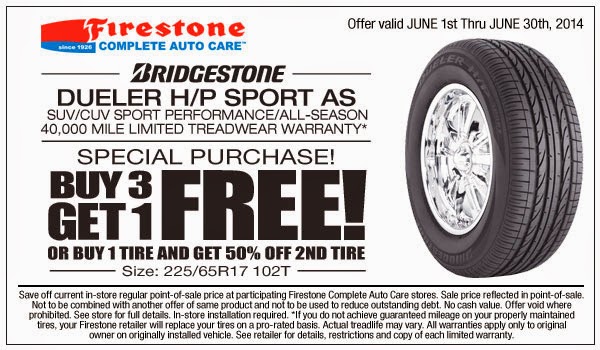 I don’t like doing it, but with the soft sands we get over here in WA sometimes you have no choice!
I don’t like doing it, but with the soft sands we get over here in WA sometimes you have no choice!
You want to avoid this!
I’d love to hear your stories; leave a comment below. What tyre pressure do you automatically drop to for beach driving?
Sharing is caring!
0 shares
Regular monitoring of the level of “atmospheres” in tires is a matter of driving safety, tread wear rate, fuel consumption and driving comfort. Unfortunately, many car owners do not attach the necessary importance to this simple and important “ritual”, neglecting it in every possible way. This article will help you understand the nuances of proper tire inflation and answer common questions from novice drivers. nine0005
(ℹ) The correct tire pressure is determined by the car manufacturer, taking into account all its features and characteristics, for each specific brand, model and operating conditions - individually.
Recommendations for optimal tire inflation take into account the weight of the machine, the loads on different axles and often involve changing the following operating parameters:
How can I find out the factory tire pressure?
You can find manufacturer's recommended tire parameters:
⚠️ Important! The recommended tire pressure for the correct operation of the vehicle is determined directly by the automaker.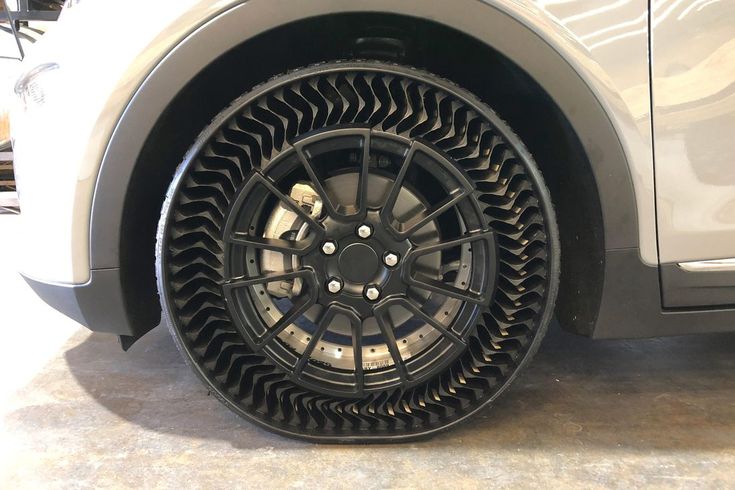 Do not confuse with the marking on the sidewall of the tire "MAX PRESSURE" - this is the maximum permitted level at which the tire will not receive damage to its structure. Often the marking is indicated in psi or kPa. nine0005
Do not confuse with the marking on the sidewall of the tire "MAX PRESSURE" - this is the maximum permitted level at which the tire will not receive damage to its structure. Often the marking is indicated in psi or kPa. nine0005
Where is the manufacturer's tire pressure chart located?
Depending on the brand of car, this information, as well as recommended tire sizes, can be found:
First you need to understand the units of measurement. For different car manufacturers and on different measuring instruments, the designations may differ.
In Ukraine, as a rule, measurements are recorded in physical atmospheres (atm, atm) or in bars (bar, bar). In the US and UK it is in pounds per square inch (psi). It is also measured in Pascals (kilopascals - kPa) according to the international system of units (SI). nine0005
In the US and UK it is in pounds per square inch (psi). It is also measured in Pascals (kilopascals - kPa) according to the international system of units (SI). nine0005
For a convenient conversion of the values used for measurements (psi, kPa, atm, bar), we suggest using the summary table below.
*Since atm and bar have a slight difference in values (1 bar = 0.986923 atm), they are summarized in one column.
**Values are rounded to the nearest tenth.
(ℹ) The pressure gauge is a basic and indispensable tool for measuring tire pressure. It is installed on each autocompressor and helps to determine how inflated the tire is.
Portable pressure gauges are available in the following types:
 nine0020
nine0020 (ℹ) TPMS tire and transmit information online to the on-board computer display or a separate screen. Sometimes there is another abbreviation like RDKS (from German Reifendruckkontrollsystem ), which is essentially the same. In some countries, such systems are required by law to be equipped with all new cars coming off the assembly line.
If your vehicle does not have such a system in the basic configuration, we recommend installing it. It will simplify the control process and help you quickly track changes in the condition of the wheels.
There are different types of TPMS sensors:

(ℹ) The indirect control system is a software addition to the ABS unit that analyzes the wheel speed. When air is lost, the radius of the tire decreases and, consequently, the distance traveled per revolution. The system compares the current and nominal data and, in case of discrepancy, signals a problem with an indicator on the dashboard. nine0005
The advantage of such a monitoring system is the absence of additional equipment. The disadvantages include the inability to determine the deviation before the movement has begun, and the operation occurs only when there is a large difference in readings.
Deviation from the standards recommended by the car manufacturer will inevitably have some undesirable consequences.
⚠️ Important! Prolonged driving on flat tires deforms them and renders them unusable for further use.
An under-inflated tire becomes too soft, causing it to lose its shape and literally collapse. The entire weight of the vehicle falls on the flexible sidewalls, especially during maneuvering, which leads to certain negative consequences: nine0020
When is it useful to reduce tire pressure?
In some cases, deflated tires can help overcome difficult road sections where the machine is likely to stall or load. Due to the part of the sidewall, which temporarily becomes a continuation of the tread, there is an increase in the contact patch with the surface. Thanks to this solution, as well as the presence of many (especially off-road tires) side lugs, it is possible to improve the vehicle's cross-country ability by an order of magnitude. The same "life hack" is used to reduce slippage at the start in races of 402 meters (drag racing), which reduces the time to overcome the distance. nine0005
A flat tire helps to overcome obstacles such as:
⚠️ Important! To pass a difficult section of the road, it is enough to release air at 1.0-1.5 atm (depending on the car, tire size and road conditions). You need to move at a speed of no more than 10-15 km / h, so as not to damage the discs and tires. After overcoming a difficult area, the pressure should be increased to the level recommended by the vehicle manufacturer. Driving on a hard surface on a half-flat tire is dangerous and fatal for the tire. nine0005
The tread part of an inflated tire from a flat and balanced tire becomes convex in the middle, which reduces the contact patch and leads to a number of undesirable consequences:
When is high tire pressure useful?
Car manufacturers recommend slightly increasing the pressure level before a long road trip and when the car is fully loaded (increasing the pressure gauge on the rear axle helps in transporting goods). Also, drivers with low-profile tires can increase the pressure a little before entering a rough road to save the discs.
⚠️ Important! nine0012 Follow the recommendations in the vehicle owner's manual. It indicates how to pump a tire in a particular operational case.
⚠️ Important! The difference in pressure gauge readings in tires on the same axle is strictly prohibited. The difference between the axles (in pairs) should not go beyond the limits prescribed by the vehicle manufacturer.
Different tire pressure gauges cause safety effects:
When the ambient temperature changes, it also changes inside the wheel. On average, when changing by 8-10 ° C, the pressure gauge needle deviates by 0.1 atm. This feature must be taken into account when operating the car and with greater care to monitor the indicators of measuring instruments when the temperature changes. nine0005
After switching to winter tires, pressure measurements must be taken with particular care. It is best to check with the onset of the first frosts and when the thermometer drops significantly below zero. Most likely, it will be necessary to inflate the wheels additionally to compensate for the effect of negative temperatures on the decrease in the level of atmospheres.
Features of maintaining the required pressure gauge readings in winter:
In the hot season, it is important not to pump the wheels, because under the influence of elevated temperature, the air inside expands and the pressure gauge needle rises. In addition to the weather itself, additional heating is affected by the speed of movement and contact with heated asphalt on especially hot days.
To maintain the correct air level in the tires in summer, consider:
Car manufacturers advise to take measurements at least once a month, and for greater safety, it is advisable to check the pressure gauge once every 2 weeks.
However, in some situations the wheels should be checked out of the box. nine0005
An extraordinary tire pressure check is recommended in the following cases: Let's answer a few common questions that motorists ask when analyzing pressure gauge readings. "Should I fill tires with nitrogen?" Answer. It's up to you, but it has some advantages: temperature fluctuations affect the performance less, and the natural loss of atmospheres is slower. "What pressure are the R16 tires?" Answer. The determining factor is the make and model of the car, not the wheel diameter. "How many atmospheres (bar) to pump into tires?" Answer. Each manufacturer indicates in the manual of a specific vehicle model the correct pressure for a certain size and operating conditions. "How do I convert psi and kPa to atm or bar?" nine0012 Answer. To convert between quantities, use the table presented in this article or an online converter. We will be glad if the information in the article helps to properly inflate tires, which in turn will ensure road safety and cost savings. If you have any questions or for advice and selection of tires - call our specialists at the numbers listed on the site! Correct tire pressure and safe roads for you! nine0005 Tires without air and 10 more latest technologies Michelin has announced the launch of mass production of tires that do not require air. Autonews.ru recalled other technologies that were introduced into cars this year or will appear in the near future. All innovations were divided into three categories: driving comfort, safety and efficiency. Driving comfort adv.rbc.ru Last year, Nissan introduced the world's first self-cleaning reversing camera. A few months later, the Japanese went even further: Nissan announced the start of tests of a car that is not subject to pollution. Clear hood The new generation of Land Rover Discovery will feature an option not currently available on any other vehicle. We are talking about a transparent hood, which, as expected, will be an excellent assistant not only on the roads, but also in everyday use. Thanks to this technology, ruts, stones and other obstacles can be seen through the hood. The principle of operation of this option is as follows: high-resolution video cameras are built into the Discovery grille, which transmit the image in real time to a large head-up display in the cabin. Laser headlights Laser optics were first used on the BMW i8. Then similar technology was introduced into its Audi model. Judging by the number of concept cars with laser headlights, in the future such optics will become much more popular than xenon and LED headlights. In a laser high beam headlight, the beam coming out of the module hits twice as far as with LED headlights. Each module consists of four powerful laser diodes. The phosphor converter converts this radiation into white light used in road traffic, creating ideal conditions for perception by the human eye. Dent protection The French have created special Air Bump body panels that protect the body from small bumps. Currently, only one car in the world is equipped with such a technical solution - the Citroen Cactus crossover presented in March. The panels are installed in the most traumatic places for the car: on the doors and corners of the bumpers. AirBump is made of thermoplastic polyurethane which is filled with air capsules. The panels absorb the energy of light collisions and protect the body from scratches and contact with other vehicles. nine0005 Fully autonomous parking In the future, motorists will no longer have to spend several minutes looking for a free parking space next to a hypermarket. More recently, Volvo has developed a fully autonomous parking feature - a new technology called Vehicle 2 Infrastructure. Safety systems Pedestrian protection Asphalt Departure Control Debuting this year, the new generation Volvo XC90 is equipped with several state-of-the-art safety systems. Among them is the asphalt exit control system. Unlike other models that rely solely on markings, the Swedish crossover can return to the road even if there are no markings at all. Special sensors located in the side of the car monitor the condition of the roadway and transmit information to the control unit. If the system detects that the vehicle has driven onto a sandy shoulder, the XC90 will return to the lane on its own. Vehicle communication with each other In the near future, all vehicles will exchange data packets with each other. Economy In the coming years, gas stations may have hydrogen dispensers. Toyota plans to start selling its first mass-produced fuel cell vehicle in mid-December. The principle of operation of the power plant of the novelty is quite simple. The hydrogen stored in the cylinders is oxidized in the fuel cell stack (electrochemical generator). Start-stop on the move Modern cars have already begun to stall on the move. For the first time, this technology, which is aimed at saving fuel, appeared on the new generation of the Citroen Grand C4 Picasso minivan. Cars in the version with diesel engines of the e-HDi family stall even before they come to a complete stop - this happens when braking at a speed of 6 kilometers per hour. 8. Answers to common questions
 Therefore, we recommend that you follow the manufacturer's data for the respective size.
Therefore, we recommend that you follow the manufacturer's data for the respective size. Airless tires and 10 more latest technologies :: Autonews
 The wheel, called Tweel, consists of a metal hub and rigid polyurethane spokes. The tire is not afraid of punctures: even after hitting metal spikes, you can safely continue driving. At the moment, the innovation is available only for commercial vehicles, but in the future, the appearance of such wheels on passenger cars is not excluded. Moreover, according to the manufacturer, Michelin Tweel is not inferior to conventional tires in terms of handling and grip coefficient. nine0005
The wheel, called Tweel, consists of a metal hub and rigid polyurethane spokes. The tire is not afraid of punctures: even after hitting metal spikes, you can safely continue driving. At the moment, the innovation is available only for commercial vehicles, but in the future, the appearance of such wheels on passenger cars is not excluded. Moreover, according to the manufacturer, Michelin Tweel is not inferior to conventional tires in terms of handling and grip coefficient. nine0005
Self-cleaning function  We are talking about a special body painting technology called Ultra-Ever Dry. The secret of the technology lies in the unique composition of the paint, which has a grease and water-repellent layer. This technology has already been tested in various climatic conditions. At the moment, the Japanese are testing Ultra-Ever Dry on the car itself. In the future, a special body paint that does not suffer from contamination will be available for Nissan vehicles at an additional cost. nine0005
We are talking about a special body painting technology called Ultra-Ever Dry. The secret of the technology lies in the unique composition of the paint, which has a grease and water-repellent layer. This technology has already been tested in various climatic conditions. At the moment, the Japanese are testing Ultra-Ever Dry on the car itself. In the future, a special body paint that does not suffer from contamination will be available for Nissan vehicles at an additional cost. nine0005  The function of the monitor is performed by the windshield. The image is transmitted in such a way that the driver will have the feeling that he is looking through the hood of his own car. In addition to the road under the engine compartment and arches, auxiliary information will also be displayed on the projection display. This is a tachometer, speedometer, axle load, as well as torque distribution. nine0005
The function of the monitor is performed by the windshield. The image is transmitted in such a way that the driver will have the feeling that he is looking through the hood of his own car. In addition to the road under the engine compartment and arches, auxiliary information will also be displayed on the projection display. This is a tachometer, speedometer, axle load, as well as torque distribution. nine0005  Such lighting makes it easier for the driver to perceive contrasting details and prevents fatigue. nine0005
Such lighting makes it easier for the driver to perceive contrasting details and prevents fatigue. nine0005  The car uses sensors to detect a free parking space and drive to it. When the driver comes to pick up the car, everything happens in reverse order. “Autonomous parking is a concept technology that makes life easier for the driver in finding a free parking space. All the driver has to do is leave the car at the entrance to the car park and then pick it up from the same place,” said Thomas Broberg, Senior Security Consultant at Volvo Car Group. nine0349
The car uses sensors to detect a free parking space and drive to it. When the driver comes to pick up the car, everything happens in reverse order. “Autonomous parking is a concept technology that makes life easier for the driver in finding a free parking space. All the driver has to do is leave the car at the entrance to the car park and then pick it up from the same place,” said Thomas Broberg, Senior Security Consultant at Volvo Car Group. nine0349
Honda has developed a Sensing safety system that helps the driver react to pedestrians in heavy city traffic. It can be especially useful, for example, when turning right and then driving through an unregulated pedestrian crossing: drivers often do not notice pedestrians because of the pillars and run over. Honda Sensing works with a camera mounted under the windshield. The system also uses a radar located in the grille.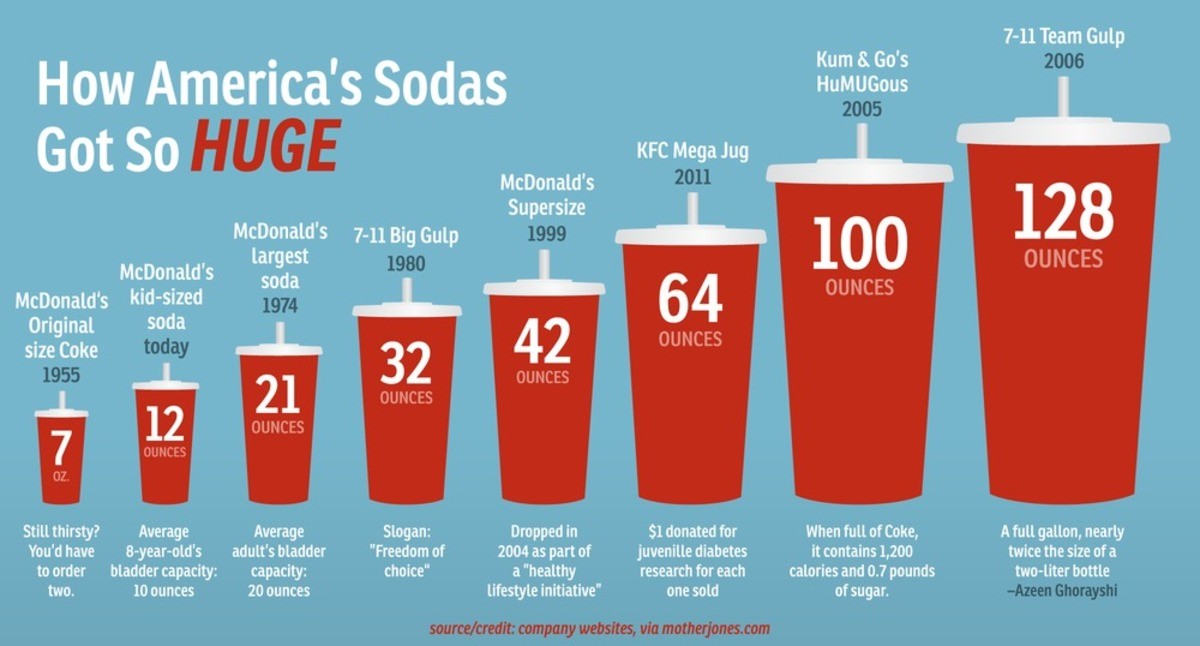 Electronics is able to recognize objects at a distance of up to 60 m from the car. If a collision is unavoidable and the driver does not respond to the audible warnings, the car will brake on its own. A similar system is used in some Volvo models, but in the case of Honda, it is more focused on pedestrians and can “see” around the corner. nine0005
Electronics is able to recognize objects at a distance of up to 60 m from the car. If a collision is unavoidable and the driver does not respond to the audible warnings, the car will brake on its own. A similar system is used in some Volvo models, but in the case of Honda, it is more focused on pedestrians and can “see” around the corner. nine0005  This will help the electronics to prevent an accident by calculating in advance the trajectory of movement and the risk of an accident. The presence of a communication system is a paramount element in the development of an autopilot. At the same time, it is not so important what data transfer protocol we are talking about - 4G or Bluetooth. “The strategy of most automakers is to make their cars connected to each other. At the same time, for many companies, equipping their models with relatively cheap 4G modules is a good tool to attract customers,” said Samuel Ropert, IDATE representative. nine0005
This will help the electronics to prevent an accident by calculating in advance the trajectory of movement and the risk of an accident. The presence of a communication system is a paramount element in the development of an autopilot. At the same time, it is not so important what data transfer protocol we are talking about - 4G or Bluetooth. “The strategy of most automakers is to make their cars connected to each other. At the same time, for many companies, equipping their models with relatively cheap 4G modules is a good tool to attract customers,” said Samuel Ropert, IDATE representative. nine0005
Filling with hydrogen  As a result of the reaction, electricity is released, which feeds the electric motor. That is, a fuel cell car is, in fact, an electric car. In addition to electricity, fuel cells also emit by-products into the atmosphere: heat and water vapor - such an exhaust is environmentally friendly. Hydrogen tanks provide an impressive range. Hydrogen Toyota, according to official figures, is capable of driving 300 miles (482 kilometers) on one gas station. At the same time, high-pressure cylinders are filled in five minutes - a serious advantage of the novelty over electric vehicles. nine0005
As a result of the reaction, electricity is released, which feeds the electric motor. That is, a fuel cell car is, in fact, an electric car. In addition to electricity, fuel cells also emit by-products into the atmosphere: heat and water vapor - such an exhaust is environmentally friendly. Hydrogen tanks provide an impressive range. Hydrogen Toyota, according to official figures, is capable of driving 300 miles (482 kilometers) on one gas station. At the same time, high-pressure cylinders are filled in five minutes - a serious advantage of the novelty over electric vehicles. nine0005 